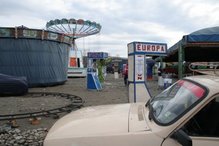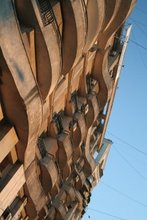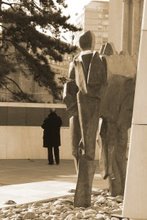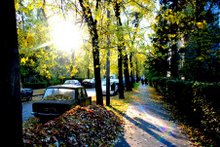Wednesday, 14 February 2007
dear reader, it is v-day – call for contributions…
everybody must love something or someone in some way at least some of the time. you get the idea. all things lovely, beautiful or funny in the largest possible sense of the terms are acceptable, preferably in languages I understand (yeah I include romanian here, although it sounds a bit like a half-truth…), obviously in media compatible with the support, but I would love to see collages, pictures, half-built snowmen, culinary triumphs, texts (including the most obscure poetry), love letters and musical bits and pieces. the question I have in mind are as follows: what is it you really like or love (semi-permanently, momentarily, foreverandever) in this world? describe and elaborate.
please include instructions, dedications and so forth. so click-start those photoshops, corel draws and open offices and get cracking. first one to come up with something gets… to be first and is assured eternal glory, all the luck in love and recreation, and at least a brazillion dollars in their neighbours’ car boot. yeah! cause I say so (and of course I decline any responsibilities for anything, being a mere editor around this space)… mailing address included here on the page, ‘abuut’ section. over and out. yours truly, love-shell.
p.s. this i found rather nice, though too much e e cummings....
Tuesday, 13 February 2007
come on up and make me smile
 spring is a-coming (in dobrogea at least)...
spring is a-coming (in dobrogea at least)... this is a lipovene type of furniture. get this: it is both a bed and a cooker! discovered in slava rusa in dobrogea. the person in front is lovely six-year-old irina playing with some of the stuff much to the annoyance of other adults to which the 'stuff' belongs to...
this is a lipovene type of furniture. get this: it is both a bed and a cooker! discovered in slava rusa in dobrogea. the person in front is lovely six-year-old irina playing with some of the stuff much to the annoyance of other adults to which the 'stuff' belongs to... this is a 'typical' fast-food take away in târgu mureș: you get chicken shaorma, all kinds of other meat, pizza, salads, and so forth... but why on earth did they call it 'panda chicken'?
this is a 'typical' fast-food take away in târgu mureș: you get chicken shaorma, all kinds of other meat, pizza, salads, and so forth... but why on earth did they call it 'panda chicken'?
the romanian language is full of diminutives used for all kinds of effecs... the text reads: 'very biiig sized clothes for fat and fattish people'
Thursday, 8 February 2007
oglinzi pe zapada








When have you last taken a train that made your ears pop because of the altitude difference? When have you last been on a train that ran along crooked rails and made a melodic sound that would have kept you awake all night if it had been a night train? I crossed the Carpathians yesterday with CFR. Cluj Bucharest in eight hours of beauty (and rattling). Here then some snowy impressions leaning more to the side of perpetuation of the legend of beautiful, timeless Transilvania. A lot of my pictures turned out badly because of the dirtiness of the train windows… After all this snowy, windy minus-degree Transilvania, Bucharest today invited T-Shirts and ice-cream for those fond of them: 18 degrees of sunniness. I decided I do not mind getting that cold that has been announcing itself if I can sit in the park, even just for a moment, without my jacket, scarf and hat. I feel like getting a more or less permanent home again, after that week on the road. Ridiculous? You try fieldwork. You look. We talk again.
Monday, 5 February 2007
OGM GMO - food and industry
Sunday, 4 February 2007
de bicherwuurm ass rem do...
various faiths in tranylvania
in the museum: troglodytes, civilisation and the balkan
As I waited for my friend to finish his meeting yesterday, I hid from the wind and snow in the Palace of Culture in Târgu Mures, and had a look at the History Museum there. History here is reduced to an archaeological collection of ceramics and iron-made ‘tools’ that more often than not are very silent about possible uses in daily life. I got very frustrated by the glass boxes as I attempted to reconstruct some kind of social life around these objects in my imagination. The collection is concentrated mainly on the glorious distant past, and the places of discovery are indicated on light-faded maps. This is definitely something Umberto Eco should have included among his brilliant excursions on ‘How to organise a public library’ and the like. I did a bit of collecting myself and present to you here the most interesting ‘explanatory comments’, presented on laminated beige posters in a very poetic English voice, as you will discover. How to make a museum as dusty as possible:
The Starcevo-Cris culture is representative for the beginning of the Neolithic. This culture is characteristic through the painted ceramics tools made by cut and polish rocks. The smalls settlements is formed by cottage.
(…)
The funerary habit was represented by incineration in plane or tumular graves.
(…)
The economy was mixted.
(…)
The tibula was used as a dress decoration. For the first time appeared in the Bronze Age and it was used until the Great Migrations (7th Century)
(…)
The 2nd Iron Age.
The ferrous metallurgy would reach its climax in La Tène due to the Celts and progressively generalise, to a large extent beginning with the 2nd Century B.C. The Dacian iron civilisation is undoubtedly one of the most remarkably civilisations of the ‘barbarian’ Europe.
(…)
The Roman epoch (106-271 A.D.) signified the moment of outmost interaction with the universal history, as the history of the Roman province of Dacia is part of the history of the Roman Empire. Accomplishing the role of a strategic bastion positioned in the barbaric world, Dacia had the statute of imperial province.
(…)
I especially like the Polish rocks, and I want a plane grave too, please! Also amazed at the (very ambivalent) emphasis on how proto-Romania was already more European / civilised than its barbaric neighbours, something reproduced in the nationalist discourse of the nineteenth century, and in the Romanisation efforts of the language at that time. This is most likely largely an issue of historiography, and of the timing at which these posters were put up. I suspect just after the revolution… but maybe someone has a more definite idea on this? Very revealing also considering the large Hungarian population of this town, and the bloody confrontations in 1990 on the Piata Trandafirilor between Hungarian students and peasants sent in from the countryside by Romanian group Vatra. Finally, what on earth are laypersons like me supposed to think about the generalised climax of ferrous metallurgy? Sound and fury… signifying and teaching nothing.
Friday, 2 February 2007
another kind of division bell
rung by the spaces you long to be, when you are bound to others. when we were younger, we were less split between lives, less caught between epochs, phases, jobs, epistemes, as well as ambiguities and time lags generated in response to those in-betweens and the ties we are creating. however, this is not an entry about nostalgia for irrevocable pasts, it is about learning to be responsible in the here and now. what the wandering brings is time to grow, and difference to learn from and about and between, with the corollary that it makes you more fragmented, though not necessarily in your loyalties. this came back to me when i heard from you again recently after what seemed a long absence. d’léift hofft alles, gleewt alles, d’léift hält nie op.











